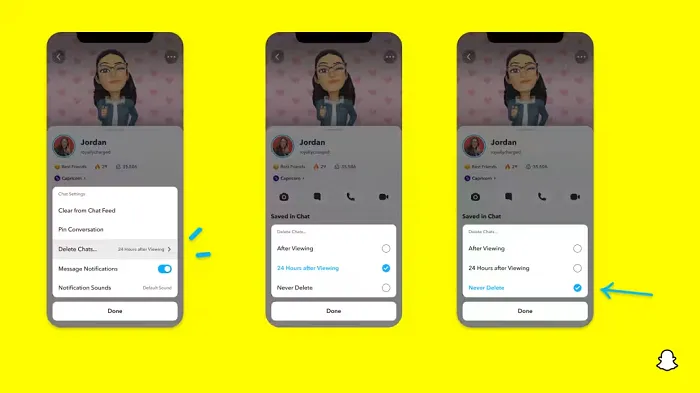SOCIAL
SMTLive Recap: Social Media Auditing 101
If editing is the most important part of writing, then reporting and auditing is the most important part of social media marketing.
Just like editing, analyzing your content’s performance on social is the only way to optimize. How else would you know how to improve your content if you don’t take some time to think critically about what you’ve created already?
Because social media auditing is obviously so crucial to this industry, we wanted to open up the metaphorical floor to our #SMTLive audience on the topic. Reporting and auditing is a complicated and technical part of the job for anyone in social media, so we wanted to hear how our community on Twitter gets it done.
#AuditGoals
So, what motivates our community to keep tabs on their content?
Hi Emma,
A1 – The strengths and weaknesses of current content, as well as opportunities for adjustment of strategy/direction to boost performance and engagement.
— Momentum Social (@MomentumSocial_) February 11, 2020
@MomentumSocial put it best: It’s important to audit your social content to see where it’s strong, where it’s weak, and how to adjust accordingly as a result.
A. 1 in short, you can learn how to effectively leverage your social media. It gives you insights into the audience you have and the audience you want to have. Constant evaluation of tactics and strategy is key in the evolving social media landscape.
— Gabriella Taekema (@Gabriella_Taeke) February 11, 2020
@Gabriella_Taeke knows that auditing is a goal-oriented process. Choosing specific strategies and metrics (such as audience engagement and demographics) is essential.
To audit or not to audit?
Just to get a better understanding of you all…
POLL: Q2 – Do you already conduct regular (monthly, yearly, etc.) social media audits? #SMTLive
— Social Media Today (@socialmedia2day) February 11, 2020
The answer was, unsurprisingly, almost unanimously “to audit.” As we said before, keeping track of performance is essential to any job in the social media industry.
In question three, we wanted to get into the nitty-gritty details and ask everyone what their favorite metrics to report on are. What’s important, and what’s not important here obviously depends on your industry, but we saw some overlap across the board.
A3: The key here is working backward from established objectives to find the right KPIs. Is the focus on conversions or brand awareness? Here are a few that we start with:
• CTR
• Engagement/messages sent
• Website sessions from social#SMTLive— BrandExtract (@BrandExtract) February 11, 2020
Many of you in our #SMTLive community mentioned that tracking engagement rates is important in almost any social media report.
Love this. Too many organizations blanket their KPIs across everything, but program objectives should drive measurement (and it’s key to set expectations up front!). #SMTLive
— ee (@erininmilwaukee) February 11, 2020
Engagement + knowing what your goals were before and after your audit = the first steps to success in reporting.
This 100 percent depends on the objectives of the company and WHY you are on social media or why you want to be on social media. But, if you don’t know engagement is always a great place to start tracking. #SMTlive
— Erin (@ErinHindalong) February 11, 2020
Lifehacking your reports
The question I get asked most is how to streamline this process…
Q4 – What tools do you use to make social media reporting easier? And what specifically do you use each tool for when auditing? #SMTLive pic.twitter.com/RKjoFG1IkO
— Social Media Today (@socialmedia2day) February 11, 2020
We wanted to know which tools make the complicated and often tedious process of social media reporting easier for our #SMTLive community. We received some great suggestions for reporting platforms, as well as some other tips of the trade.
While there is no one-size-fits-all tool for reporting, it’s important to test out different platforms and ask around within the industry to find out which one could work best for your current goals.
Sprinklr got two shout outs in the chat.
Why report?
There are a million reasons why tracking your content’s performance on social is an essential part of the job, but we wanted to hear how those on #SMTLive were using their reporting results lately.
Look at the time of day, day of the week, content topics that resonate, and channels that are hitting your objectives best. One example of a past shift I had was we noticed in our audit Saturday content was performing best so we started testing that on multiple channels. #SMTLive
— Erin (@ErinHindalong) February 11, 2020
@ErinHindalong clearly gets a lot out of her social media reports, such as suggested ways to alter her content. Erin’s comment also brought up a common question in the social media world: What do you do about weekends?
Do you have a team that engages with inbound comments on weekends? I find that it’s so valuable to have your brand ready to reply when a post goes out. #SMTLive
— ee (@erininmilwaukee) February 11, 2020
How do you solve a problem like a weekend? Well, according to @erininmilwaukee, it’s valuable to have staffers available seven days a week.
For that client we did. If it’s a big enough brand and global we made sure we had community managers available if needed. But…that’s also why I don’t work at an agency anymore. ???? #SMTLive
— Erin (@ErinHindalong) February 11, 2020
But according to @ErinHindalong, there’s a time and place for weekend work.
Thank you so much for recapping our social media auditing and reporting chat with us, we hope you learned a little more about the topic than you knew before – and be sure to tune into our next #SMTLive Twitter chat on Tuesday 2/25 at 12pm EST.
SOCIAL
Snapchat Explores New Messaging Retention Feature: A Game-Changer or Risky Move?

In a recent announcement, Snapchat revealed a groundbreaking update that challenges its traditional design ethos. The platform is experimenting with an option that allows users to defy the 24-hour auto-delete rule, a feature synonymous with Snapchat’s ephemeral messaging model.
The proposed change aims to introduce a “Never delete” option in messaging retention settings, aligning Snapchat more closely with conventional messaging apps. While this move may blur Snapchat’s distinctive selling point, Snap appears convinced of its necessity.
According to Snap, the decision stems from user feedback and a commitment to innovation based on user needs. The company aims to provide greater flexibility and control over conversations, catering to the preferences of its community.
Currently undergoing trials in select markets, the new feature empowers users to adjust retention settings on a conversation-by-conversation basis. Flexibility remains paramount, with participants able to modify settings within chats and receive in-chat notifications to ensure transparency.
Snapchat underscores that the default auto-delete feature will persist, reinforcing its design philosophy centered on ephemerality. However, with the app gaining traction as a primary messaging platform, the option offers users a means to preserve longer chat histories.
The update marks a pivotal moment for Snapchat, renowned for its disappearing message premise, especially popular among younger demographics. Retaining this focus has been pivotal to Snapchat’s identity, but the shift suggests a broader strategy aimed at diversifying its user base.
This strategy may appeal particularly to older demographics, potentially extending Snapchat’s relevance as users age. By emulating features of conventional messaging platforms, Snapchat seeks to enhance its appeal and broaden its reach.
Yet, the introduction of message retention poses questions about Snapchat’s uniqueness. While addressing user demands, the risk of diluting Snapchat’s distinctiveness looms large.
As Snapchat ventures into uncharted territory, the outcome of this experiment remains uncertain. Will message retention propel Snapchat to new heights, or will it compromise the platform’s uniqueness?
Only time will tell.
SOCIAL
Catering to specific audience boosts your business, says accountant turned coach

While it is tempting to try to appeal to a broad audience, the founder of alcohol-free coaching service Just the Tonic, Sandra Parker, believes the best thing you can do for your business is focus on your niche. Here’s how she did just that.
When running a business, reaching out to as many clients as possible can be tempting. But it also risks making your marketing “too generic,” warns Sandra Parker, the founder of Just The Tonic Coaching.
“From the very start of my business, I knew exactly who I could help and who I couldn’t,” Parker told My Biggest Lessons.
Parker struggled with alcohol dependence as a young professional. Today, her business targets high-achieving individuals who face challenges similar to those she had early in her career.
“I understand their frustrations, I understand their fears, and I understand their coping mechanisms and the stories they’re telling themselves,” Parker said. “Because of that, I’m able to market very effectively, to speak in a language that they understand, and am able to reach them.”Â
“I believe that it’s really important that you know exactly who your customer or your client is, and you target them, and you resist the temptation to make your marketing too generic to try and reach everyone,” she explained.
“If you speak specifically to your target clients, you will reach them, and I believe that’s the way that you’re going to be more successful.
Watch the video for more of Sandra Parker’s biggest lessons.
SOCIAL
Instagram Tests Live-Stream Games to Enhance Engagement

Instagram’s testing out some new options to help spice up your live-streams in the app, with some live broadcasters now able to select a game that they can play with viewers in-stream.
As you can see in these example screens, posted by Ahmed Ghanem, some creators now have the option to play either “This or That”, a question and answer prompt that you can share with your viewers, or “Trivia”, to generate more engagement within your IG live-streams.
That could be a simple way to spark more conversation and interaction, which could then lead into further engagement opportunities from your live audience.
Meta’s been exploring more ways to make live-streaming a bigger consideration for IG creators, with a view to live-streams potentially catching on with more users.
That includes the gradual expansion of its “Stars” live-stream donation program, giving more creators in more regions a means to accept donations from live-stream viewers, while back in December, Instagram also added some new options to make it easier to go live using third-party tools via desktop PCs.
Live streaming has been a major shift in China, where shopping live-streams, in particular, have led to massive opportunities for streaming platforms. They haven’t caught on in the same way in Western regions, but as TikTok and YouTube look to push live-stream adoption, there is still a chance that they will become a much bigger element in future.
Which is why IG is also trying to stay in touch, and add more ways for its creators to engage via streams. Live-stream games is another element within this, which could make this a better community-building, and potentially sales-driving option.
We’ve asked Instagram for more information on this test, and we’ll update this post if/when we hear back.
-

 PPC5 days ago
PPC5 days ago19 Best SEO Tools in 2024 (For Every Use Case)
-

 MARKETING7 days ago
MARKETING7 days agoStreamlining Processes for Increased Efficiency and Results
-
SEARCHENGINES6 days ago
Daily Search Forum Recap: April 17, 2024
-

 PPC7 days ago
PPC7 days ago97 Marvelous May Content Ideas for Blog Posts, Videos, & More
-

 SEO7 days ago
SEO7 days agoAn In-Depth Guide And Best Practices For Mobile SEO
-
SEARCHENGINES5 days ago
Daily Search Forum Recap: April 18, 2024
-

 MARKETING6 days ago
MARKETING6 days agoEcommerce evolution: Blurring the lines between B2B and B2C
-
SEARCHENGINES4 days ago
Daily Search Forum Recap: April 19, 2024



